




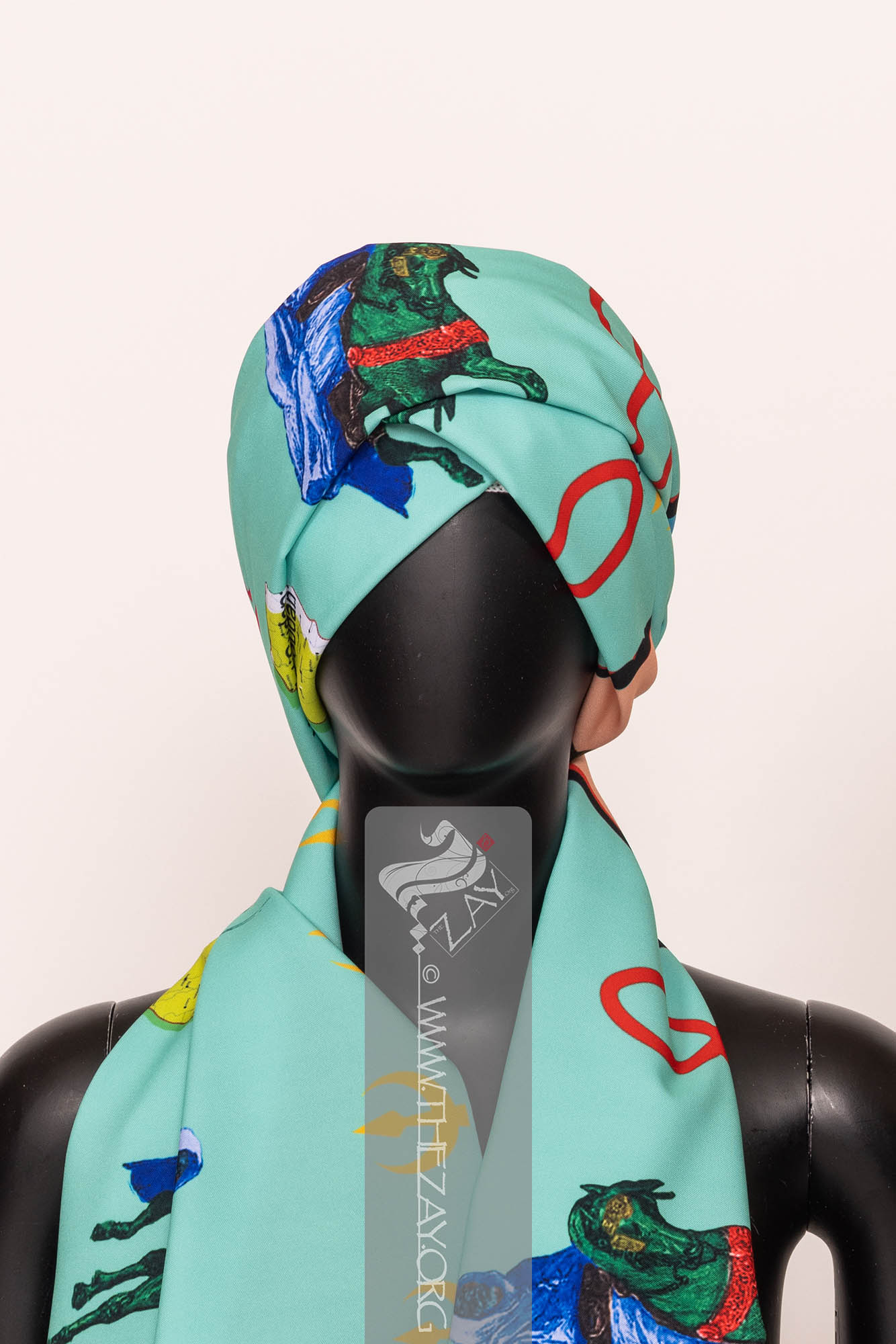
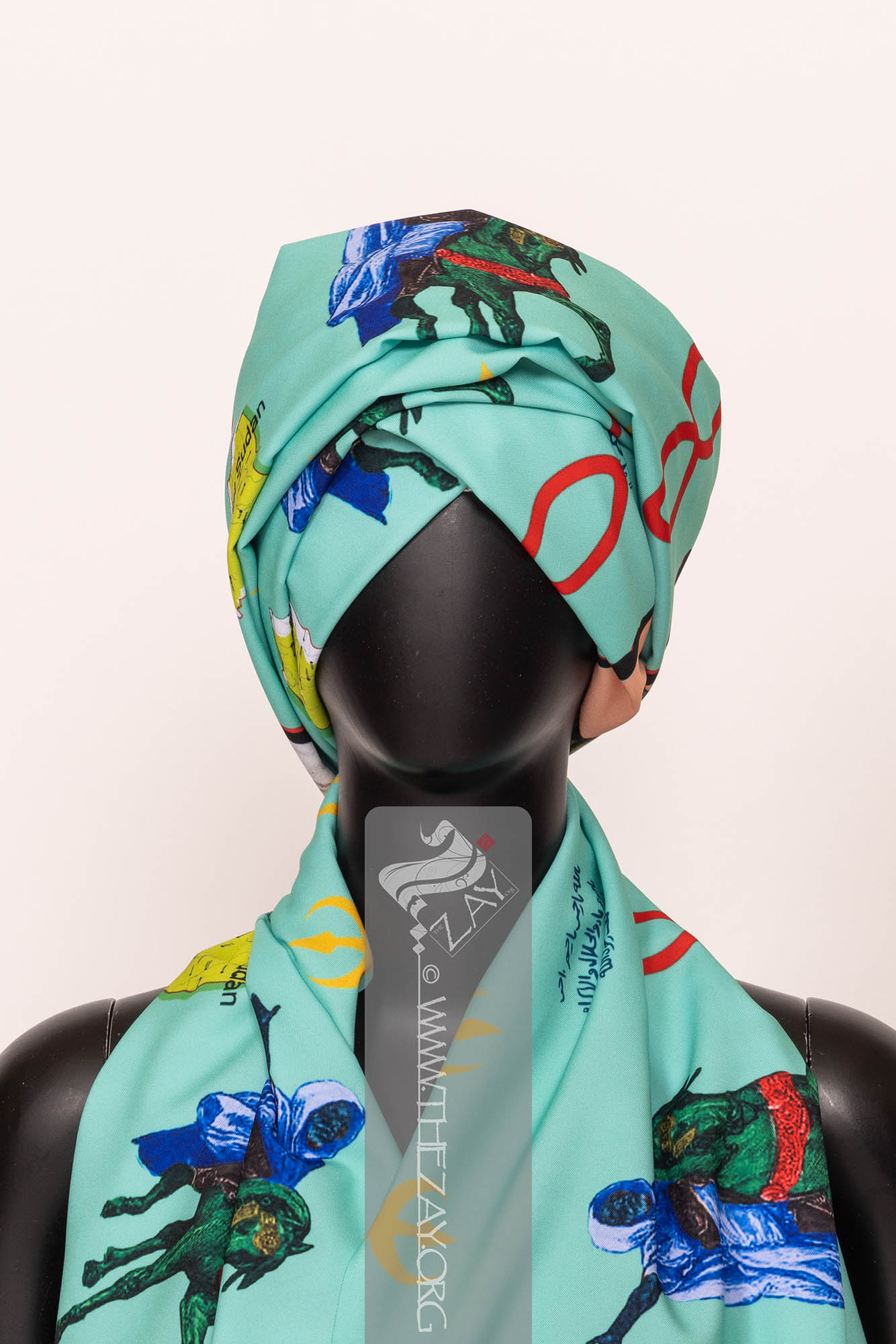


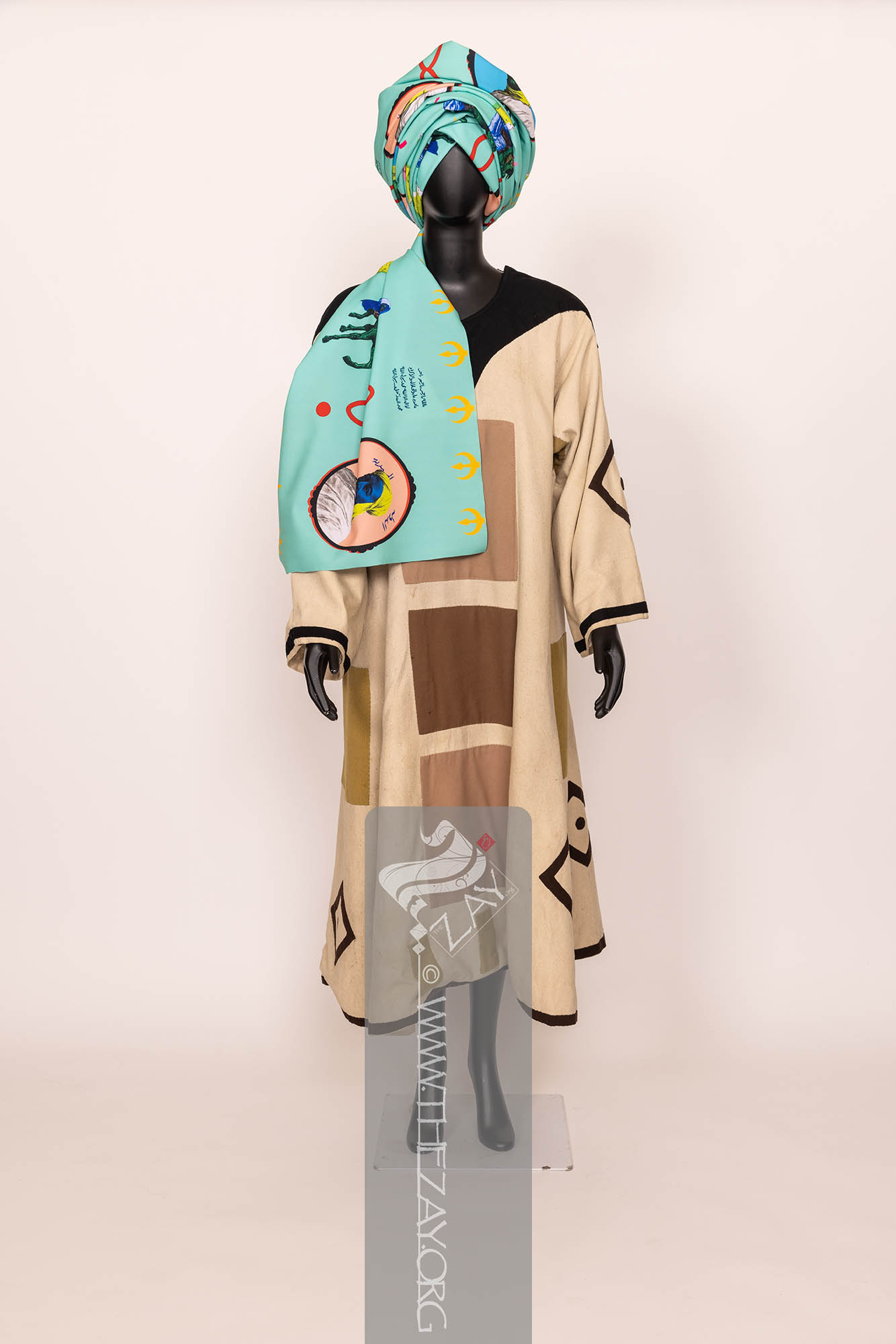

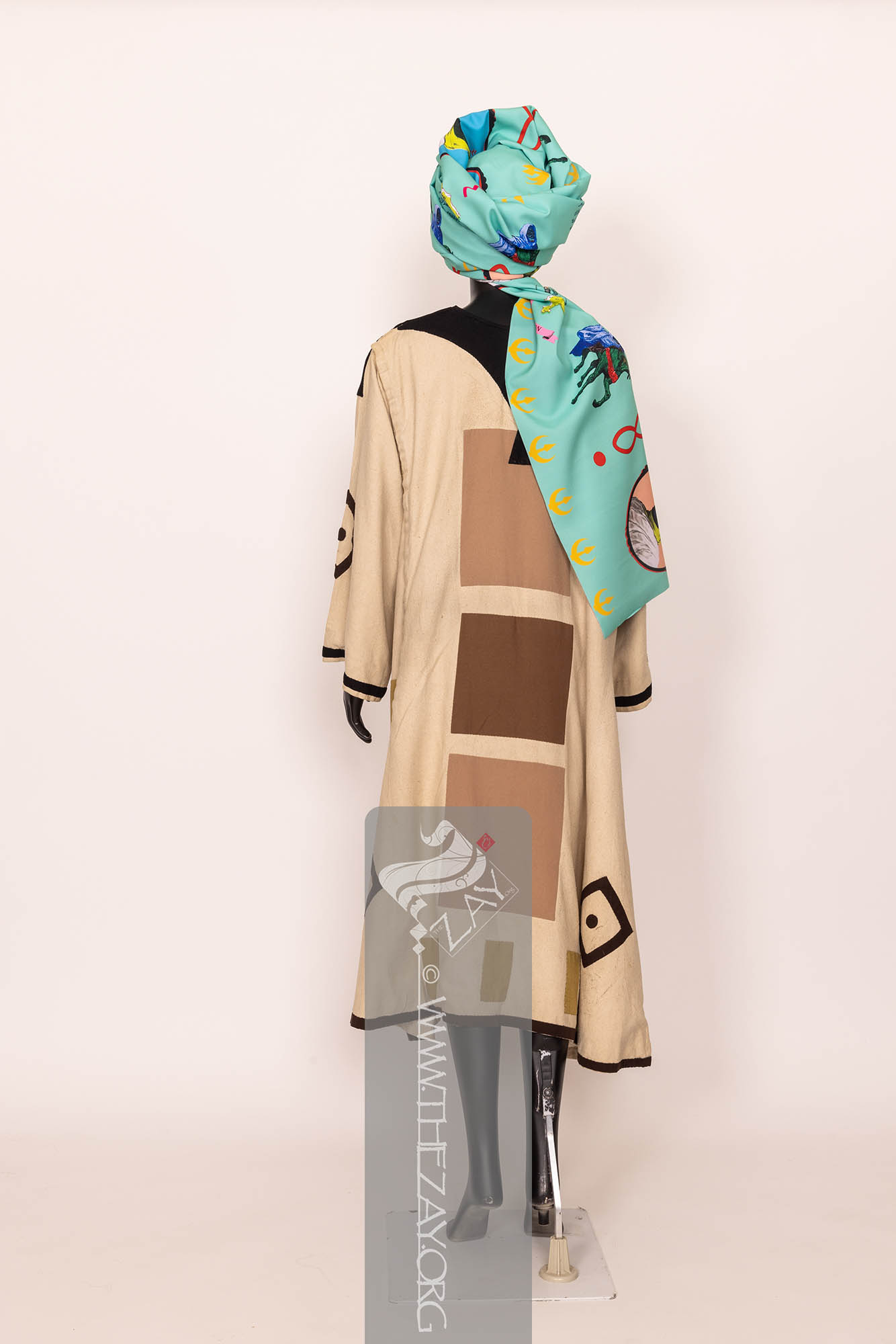
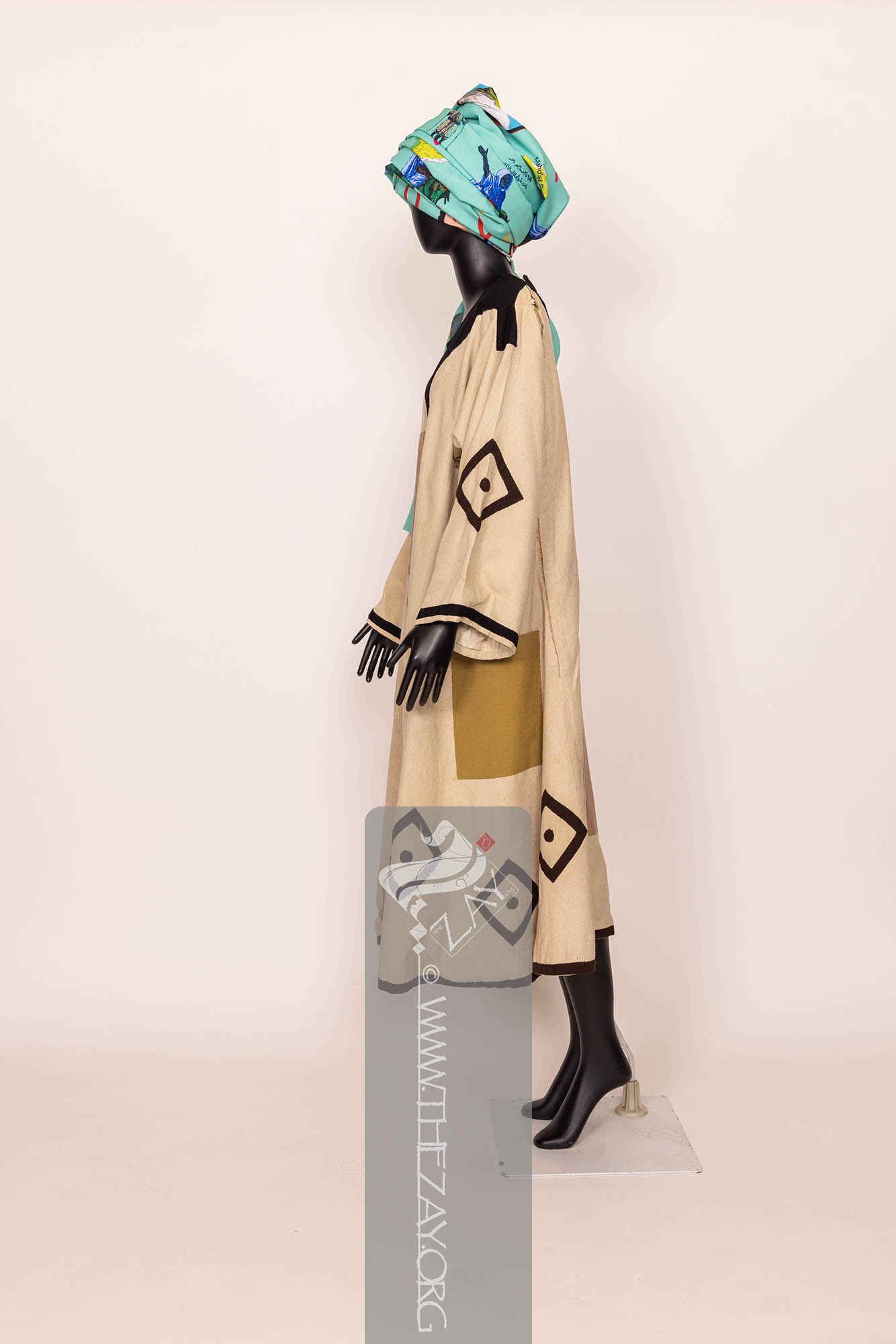
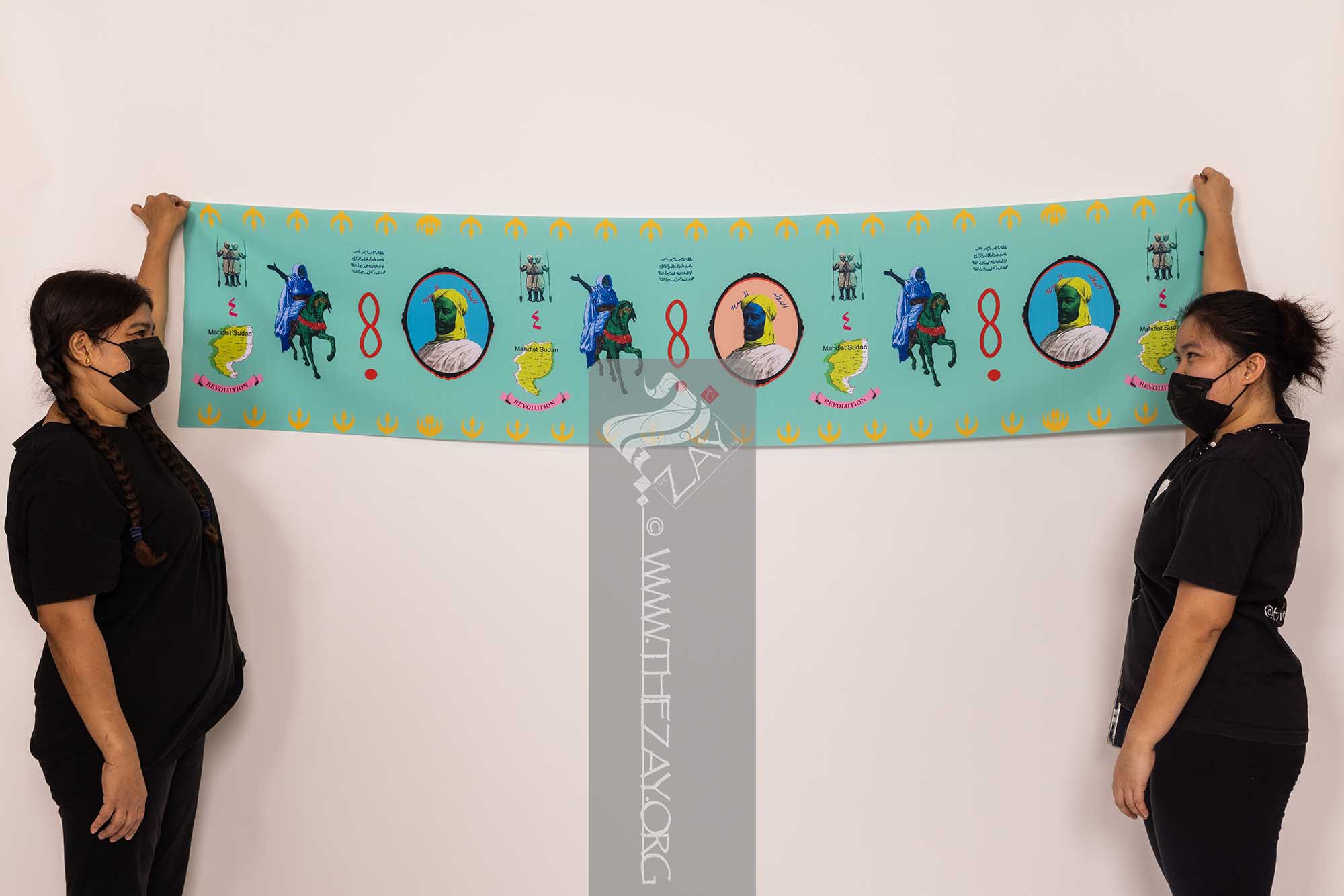
| Local Name | ‘Imamah |
| Object Category | Headwear |
| Gender | Male |
| Place Of orgin | Sudan |
| Region | Sudan |
| Object Range | Sudan, Egypt |
| Dimensions | Length: 600 cm Width: 45 cm |
| Materials | Synthetic |
| Technique | |
| Color | |
| Motif | Other |
| Provenance | Gifted, Amado Al Fadni , Cairo 2022 |
| Location | The Zay Zay: (Arabic: costume, Pl. azyaā’), a set of clothes in a style typical of a particular country or historical period. Initiative |
| Status | In Storage |
| ZI number | ZI2022.500944 SUDAN |
Ṭāgīyah: (Arabic: cap; Synonym: Ṭāgīyah, Ṭā’īyah), a small round skull cap worn by the Arab communities of the Middle Eastern and North African countries. It is worn by both men and women and has several regional versions and is also popular amongst the Muslim communities of Central, South, and Southeast Asia.
), in different formats all across the Arab world.